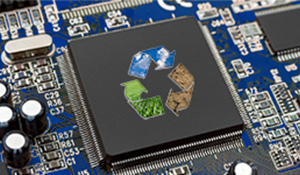Just because a material is a good substrate for making semiconductors doesn’t mean it will do everything the engineer wants it to do. In fact, surface modification — the act of modifying the surface of a material in a way that will affect its ultimate functioning — is integral to semiconductor manufacturing.
The molecules and atoms that make up the surface of a substance are the ones most likely to suffer the corrosive consequences of being exposed to something else. Atoms on the surface phase of a material interact with whatever they touch — both the atoms in the bulk phase of a material and those of any gas, liquid or other material adjacent to them outside the bulk phase.
Surface modification can protect those atoms and strengthen them, or we can use the process to alter the surface in ways that affect how the material functions. We can reduce roughness, add functional groups or surface energy modifiers, and change pattern CD. All of these changes mean we can tailor how a material behaves and what it will do during semiconductor manufacturing.
Surface modification is a complementary nanotechnology that helps other technology work. If the chemistry of a surface limits its functionality, surface modification can circumvent those limitations by changing the surface of the material. Surface modification can also simplify the processes needed to get the desired end result; for example, modifying the surface of a material may reduce processing steps from 14 to just four.
Coating a surface is one way to modify it, and there are others. Brewer Science pioneered coatings for the semiconductor industry, and we’re currently working on multiple approaches for surface modification of patterned resist lines or various types of surfaces using spin-coat/track-friendly processes.
The technologies we’ve developed for patterned resist lines allow us to reduce roughness, add functional groups or surface energy modifiers and change pattern CD. Our coatings can also be modified to deliver additional functionality like hydrophobicity, acid or base deposition, or attachment sites for further film growth (layer-by-layer).
As we continue to explore the potential of these materials, we’re open to partnering with other researchers to provide materials for evaluation in various processes. We’re committed to using innovation in surface modification techniques to help our customers improve throughput, manage costs and solve problems.




Subscribe to Our Blog